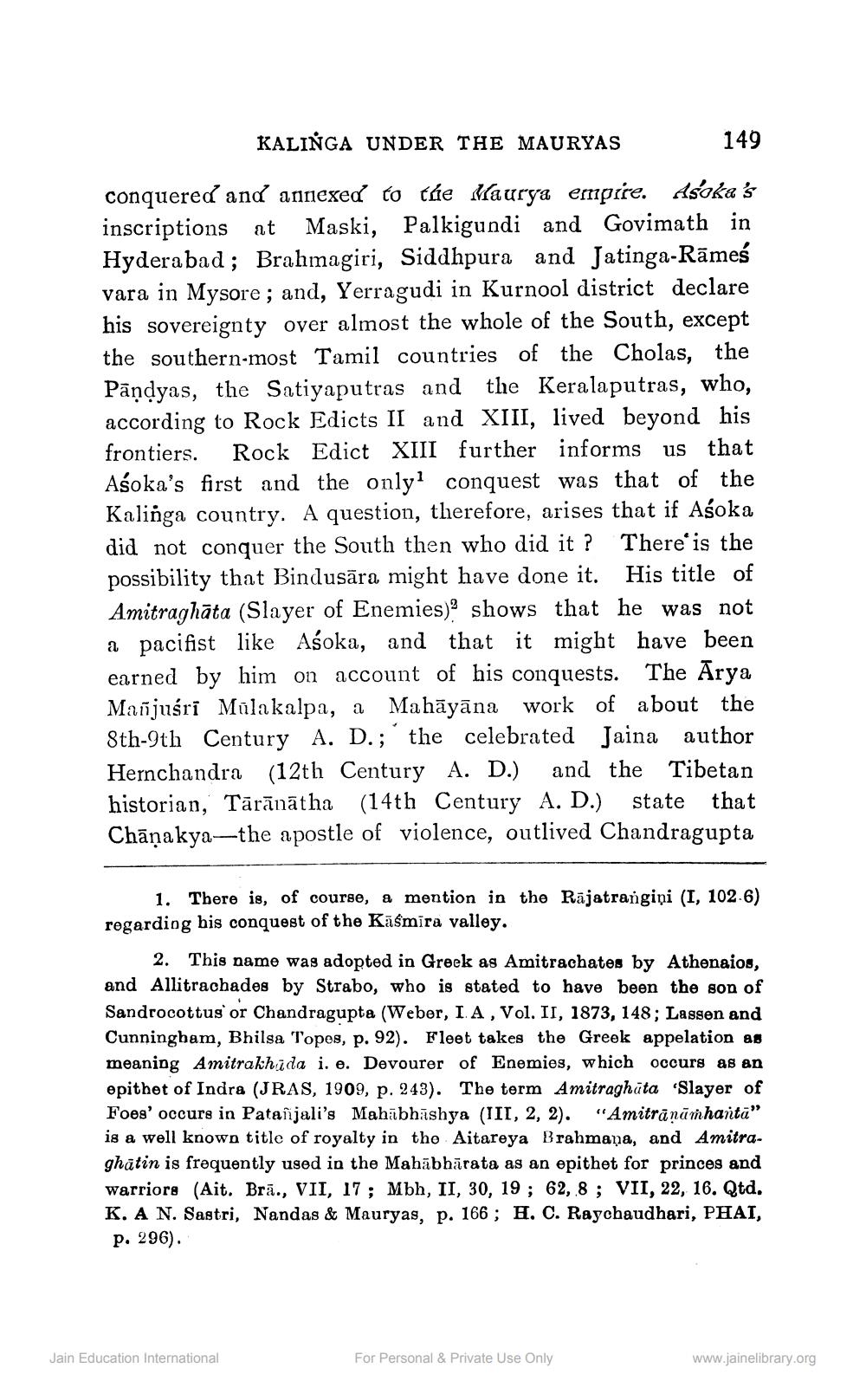________________
KALINGA UNDER THE MAURYAS
149
conquered and annexed to the Maurya empire. Asoka's inscriptions at Maski, Palkigundi and Govimath in Hyderabad; Brahmagiri, Siddhpura and Jatinga-Rāmes vara in Mysore ; and, Yerragudi in Kurnool district declare his sovereignty over almost the whole of the South, except the southern-most Tamil countries of the Cholas, the Pāņdyas, the Satiyaputras and the Keralaputras, who, according to Rock Edicts II and XIII, lived beyond his frontiers. Rock Edict XIII further informs us that Asoka's first and the only conquest was that of the Kalinga country. A question, therefore, arises that if Asoka did not conquer the South then who did it ? There'is the possibility that Bindusāra might have done it. His title of Amitraghāta (Slayer of Enemies)? shows that he was not à pacifist like Asoka, and that it might have been earned by him on account of his conquests. The Arya Manjusri Mülakalpa, a Mahāyāna work of about the 8th-9th Century A. D.; the celebrated Jaina author Hernchandra (12th Century A. D.) and the Tibetan historian, Tārānātha (14th Century A. D.) state that Chāņakya—the apostle of violence, outlived Chandragupta
1. There is, of course, a mention in the Rājatrangiņi (I, 102.6) regarding his conquest of the Kāśmira valley.
2. This name was adopted in Greek as Amitrachates by Athenaios, and Allitrachades by Strabo, who is stated to have been the son of Sandrocottug'or Chandragupta (Weber, IA , Vol. II, 1873, 148; Lassen and Cunningham, Bhilsa Topes, p. 92). Fleet takes the Greek appelation as meaning Amitrakhuda i. e. Devourer of Enemies, which occurs as an epithet of Indra (JRAS, 1909, p. 243). The term Amitraghūta "Slayer of Foes' occurs in Patañjali's Mahābhashya (III, 2, 2). "Amitrānāmhantā" is a well known title of royalty in the Aitareya Brahmana, and Amitraghātin is frequently used in the Mahābhārata as an epithet for princes and warriors (Ait. Brā., VII, 17; Mbh, II, 30, 19; 62,8 ; VII, 22, 16. Qtd. K. A N. Sastri, Nandas & Mauryas, p. 166; H. C. Raychaudhari, PHAI, p. 296).
Jain Education International
For Personal & Private Use Only
www.jainelibrary.org




